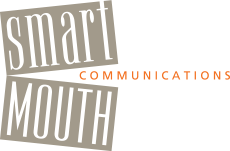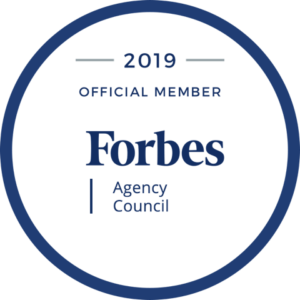SmartMouth Talks!
I Don’t Know
A Picture is Indeed Worth a Thousand Words
The 411 on 411
Oral Surgery Sounds Fun Right About Now … ?!
My 10 am client canceled this morning. At 9:45. “Something came up.” Surgery? Family emergency? His boss called him in at the last minute? Not sure. “Something.” It was his third cancelation in less than a month.
Quote of the Week
Presence
Vocabulary Word of the Week
Prepare Your Plan, but Be Ready to Change It
Adaptability is key. In the May issue of Harvard Business Review, veteran mutual fund executive Robert C. Pozen authored an article on “Extreme Productivity” and in it he addresses 6 principles for greater personal productivity. Principle 4 is “Prepare Your Plan, but Be Ready to Change It” … Amen, Bob!
And I quote from Pozen’s Principle 4: “Most executives must give talks to various groups. They often prepare by writing out the full text of their remarks. But that makes them feel compelled to deliver the whole speech even if the audience is not receptive. Speaking is very different from writing. You need a much clearer line of argument, and you have to connect with your listeners at a given time. They may be bored or excited – you won’t know in advance. To prepare for a speaking engagement, you should jot down on one page a list of your four or five key points and a concluding paragraph.”
Nicely put. Less wordsmithing, more dedicated focus on key points. The only part I might take issue with – and those of you who have been through my coaching will smile! – is that I believe four or five key points is too many. Sometimes it’s too many for the speaker to remember, and always it’s too many for an audience to retain. Other than that, Bob nailed it.
You may feel better having prepared a full-text script, rather than putting yourself in a position that feels a lot like ad libbing or winging it. But by being wed to your words, sentences and paragraphs once you’re at the front of the room, you risk sacrificing the real-time connection with your audience. So even if you do prefer a full-text script, be sure to also know your key points and promise yourself that you’ll remain adaptable … if the audience is fading, be ready and willing to ditch the script.
Thanks for this reinforcement, Bob. As I always say to clients, it’s not all about you, it’s all about them … the Audience!
Leadership Development Redux
Fascinating! I find it absolutely fascinating that conferences and summits and institutes and seminars on leadership and leadership development boast agendas chock full of topics, except for the one that matters most … communicating effectively. Wow, really?
Can a leader really lead without communicating effectively? Can a leader succeed on these topics alone: managing tight budgets for profitability, maximization of social media, cutting edge HR programs, understanding corporate social responsibility, or fostering a culture that’s comfortable with change? Um, I don’t think so …
My own obvious bias notwithstanding, you could argue that true leadership is almost exclusively about communicating effectively, and success is almost exclusively dependent on the ability to communicate effectively. Think about it. No one succeeds alone. No one leads alone. “Leadership” implies the involvement of, and need for, other people. And how does one lead other people? Through budgets? Through HR policies and programs? Through Facebook? No. Those are management issues and tools. Leadership is different. One leads other people by engaging, connecting, inspiring, persuading, informing, motivating … all communications tasks.
Successful leaders are people who communicate with a steady, dependable “voice” … a voice that’s clear, open, appreciative, and affirming. The true work of a leader is to be able to find his/her voice, the exact style and tone, and then stick to it. The trickiest part is to remain clear, open, appreciative, and affirming even when times are tense and the message is difficult. This is absolutely the distinguishing characteristic for leadership, though; it’s how one engages, connects, inspires, persuades, informs, motivates, etc. even under duress.
I am not suggesting that managing can be done by a trained monkey and that leadership is for the elite few. Not at all. In fact, managing well also requires the effective communications skills of a leader. What I am suggesting, though, is that, in one way or another, we are all leaders or in leadership positions. And so the single most important skill we can develop is good communications skills, beginning with a clear, open, appreciative, and affirming voice. And then the finer points will come with time … or with reading this blog!
Power Points on PowerPoint
Here’s what we know …
- Less is more.
- A picture is worth a thousand words.
- Microsoft named it PowerPoint, not EveryPoint.
- Slides are a visual aid for the audience, not a script for the speaker.
- Visual aids are meant to reinforce and illustrate, not narrate.
- Screen + darkened room + speaker taking time to boot up technology = naptime.
- Slides + bullet points with sub bullet points + handouts + speaker = audience overload.
Nonetheless, PowerPoint is to meetings as negative campaigning is to elections: something we don’t like but feel helpless about and resign ourselves to accepting; something we complain about, but rarely take steps to change.
Soooooo, just a few SmartMouth ideas for changing it up:
Write on a whiteboard or giant sticky notes for visuals. It’s animated and dynamic; it’s as though you’re engaging the audience in the process of creating your “slides,” which is far more entertaining and memorable for them.
Use video footage instead of slides when and if you can. People love to watch TV! There’s so much available out there (YouTube, etc.), and it’s easy to embed a video into a traditional PowerPoint presentation.
Think about creating slides that use one word or one sentence to capture the “so what?” of your points. You should know your stuff well enough to be able to speak to the topic without needing to read a paragraph off the screen anyway. If you don’t, that’s a whole other problem, isn’t it?
Be brief. Be animated. Be present. Be engaged. Be open to a dialogue with your audience. If you do all that, you might not even need visuals. Brevity is so impactful just on its own.
Be adaptable! Be open to shutting down the PowerPoint if you notice you’re losing your audience. When all else fails, connect with the people in your audience. It’s all about them anyway. Don’t kill them with your slides just because you worked hard on preparing them. It’s not all about you!
The word “presentation” is not automatically synonymous with PowerPoint. You have choices …



